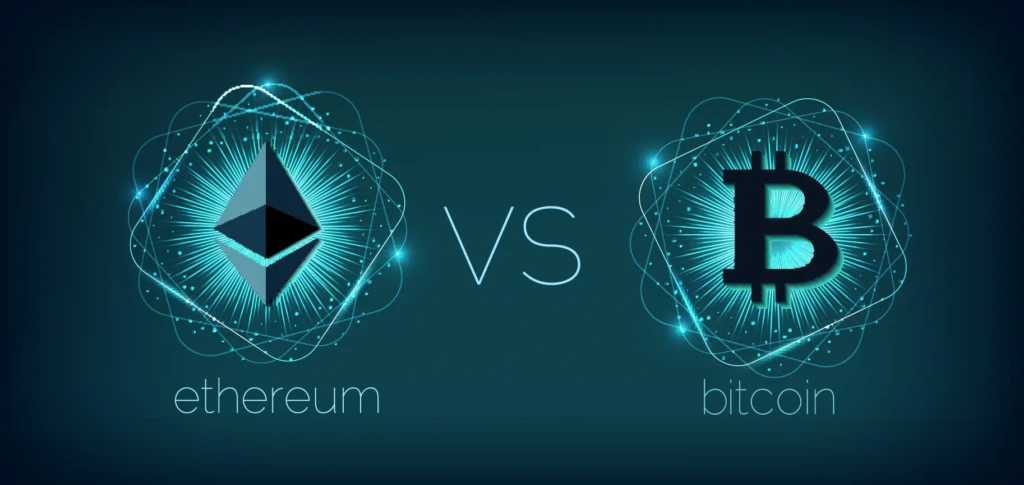What Has More Growth Potential Bitcoin or Ethereum?
When investors debate what has more growth potential, Bitcoin or Ethereum, they are really weighing two very different visions for the future of digital assets. Bitcoin, the original cryptocurrency, remains the world’s largest by market capitalization and is widely regarded as digital gold. Ethereum, meanwhile, powers a sprawling decentralized ecosystem of smart contracts and decentralized applications (dApps). Both have compelling investment cases—but their growth trajectories depend on diverging factors, from regulatory developments to technological upgrades.
Bitcoin: Digital Gold With Macro Tailwinds
Bitcoin’s core value proposition is scarcity. Its 21 million coin limit and predictable halving cycles underpin a narrative similar to gold. Many institutional investors, including publicly traded companies and major asset managers, now treat Bitcoin as a hedge against inflation and a store of value.
Institutional Adoption and ETFs
The approval of U.S. spot Bitcoin ETFs in 2024, spearheaded by firms such as BlackRock and Fidelity, unlocked a new wave of institutional capital. According to CoinDesk research, inflows to Bitcoin ETFs surpassed $15 billion within the first year, highlighting unprecedented demand. These developments suggest that Bitcoin could continue to grow as a macro hedge, especially during periods of currency debasement or economic uncertainty.
Scarcity and Halving Cycles
Every four years, Bitcoin undergoes a “halving,” reducing block rewards for miners and effectively slowing supply growth. Historical data shows that each halving has coincided with substantial price appreciation over the following 12–18 months. With the next halving scheduled for 2028, Bitcoin’s scarcity-driven growth story remains intact.
Ethereum: The Internet of Value
While Bitcoin positions itself as a monetary asset, Ethereum is the backbone of decentralized finance (DeFi), non-fungible tokens (NFTs), and countless Web3 applications. Its programmable blockchain enables smart contracts, allowing developers to create everything from decentralized exchanges to complex lending protocols.
Proof-of-Stake and Sustainability
Ethereum’s 2022 “Merge” transitioned the network from proof-of-work to proof-of-stake, reducing its energy consumption by over 99%. This environmentally friendly shift makes Ethereum more attractive to ESG-conscious institutional investors and positions it favorably in jurisdictions where sustainability is key to regulatory approval.
Layer-2 Scaling and Network Upgrades
Scaling solutions like Arbitrum, Optimism, and the upcoming “Danksharding” upgrade are designed to reduce transaction fees and increase throughput. These improvements are critical for supporting mass adoption of decentralized applications. If Ethereum succeeds in maintaining its dominance as the “world computer,” its growth potential could surpass Bitcoin’s purely monetary narrative.
Market Metrics and Valuation
Comparing market data provides context for evaluating what has more growth potential, Bitcoin or Ethereum.
| Metric (2025) | Bitcoin | Ethereum |
|---|---|---|
| Market Cap | ~$1.2 trillion | ~$480 billion |
| Daily On-Chain Transactions | ~350,000 | ~1.2 million |
| Total Value Locked (DeFi) | Minimal | Over $100 billion |
| Inflation Rate | ~1.7% (and falling post-halving) | ~0.5% (deflationary since EIP-1559) |
Ethereum’s active ecosystem and deflationary tokenomics suggest a higher relative growth rate. However, Bitcoin’s larger base and brand recognition give it unparalleled stability and liquidity.
Regulatory and Competitive Landscape
Regulation will play a decisive role in determining what has more growth potential, Bitcoin or Ethereum.
- Bitcoin: Widely recognized as a commodity in the U.S. and many other jurisdictions, Bitcoin faces fewer regulatory uncertainties. Its simplicity as a digital asset, rather than a network for securities-like applications, provides legal clarity.
- Ethereum: While Ethereum is also often treated as a commodity, its role as the foundation for DeFi could attract more regulatory scrutiny, especially from agencies like the U.S. Securities and Exchange Commission.
Competition is another factor. Bitcoin’s main rival is gold, while Ethereum faces challenges from faster, cheaper blockchains such as Solana and Avalanche.
Investment Strategies for Both Assets
Investors exploring what has more growth potential, Bitcoin or Ethereum often diversify to capture the unique value propositions of each.
- Bitcoin Allocation: Acts as a hedge against inflation and macroeconomic instability. Suitable for risk-averse investors seeking digital scarcity.
- Ethereum Allocation: Appeals to those bullish on decentralized applications and blockchain utility beyond money. Higher risk, but potentially higher reward if DeFi and Web3 adoption accelerate.
FAQ: What Has More Growth Potential, Bitcoin or Ethereum?
Q1: What has more growth potential, Bitcoin or Ethereum in 2025?
Both show promise. Bitcoin benefits from macroeconomic trends and institutional adoption, while Ethereum’s ecosystem and technological upgrades create strong growth potential.
Q2: What has more growth potential, Bitcoin or Ethereum for long-term investors?
Long-term investors seeking stability may favor Bitcoin. Those interested in decentralized finance and blockchain innovation may find Ethereum’s upside more compelling.
Q3: What has more growth potential, Bitcoin or Ethereum if regulations tighten?
Bitcoin likely faces less risk from regulatory crackdowns due to its commodity-like status, while Ethereum could see increased scrutiny given its complex ecosystem.
Q4: What has more growth potential, Bitcoin or Ethereum for institutional portfolios?
Institutions increasingly include both. Bitcoin is treated as a hedge, whereas Ethereum offers exposure to Web3 growth. A balanced allocation may capture the strengths of each.
Conclusion: Balancing Scarcity and Utility
Determining what has more growth potential, Bitcoin or Ethereum depends on an investor’s perspective. Bitcoin’s scarcity and growing institutional adoption support a strong long-term value proposition as a digital store of value. Ethereum’s evolving technology and expanding decentralized ecosystem suggest significant upside for those betting on blockchain utility.
For most investors, a diversified approach remains the most pragmatic strategy. Bitcoin offers stability akin to digital gold, while Ethereum provides exposure to the rapidly growing world of decentralized applications. The next decade may reveal that the real opportunity lies not in choosing one over the other—but in understanding how both assets complement a forward-looking crypto portfolio.

